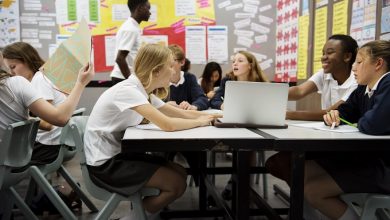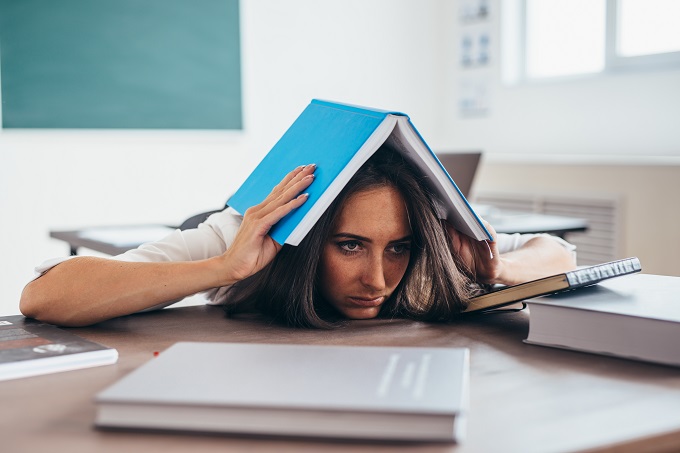Teachers need to learn how to maximise their tax deduction
School has only just started, and it’s a busy time for all teachers, but it’s also only four months until tax time which means now is when you should be getting organised to maximise your tax deductions for this financial year. And that doesn’t mean wild spending at the stationery store on June 30...

Although talking about tax can be as titillating as marking a stack of essays on the three levels of government, knowing that you’ve done everything you can to maximise your return is as rewarding as turning off your computer on the last day of school.
It pays to make sure you know exactly what you can and can’t claim as deductions, and while the finer details can change each year, the basics stay the same.
Rules for claiming
The Australian Tax Office (ATO) is pretty clear on what can and can’t be claimed:
- You need to have paid your own money for something and it can’t have been reimbursed by your school or employer
- It needs to be directly related to your current position and earning an income
- You need records to prove it.
It’s the last point where many people fall down. “Records are vital,” says Linda Cooper, managing director at Trio Accounting. “If your deductions come to more than $300 in a financial year, you must keep receipts for all your purchases, and be able to provide them if you’re audited. Records need to be kept for five years.”
The $300 limit may prevent some teachers from maximising their return, simply because they haven’t kept adequate records over the year and want to take a ‘better safe than sorry’ approach.
“The ATO have an app called MyDeductions which help people keep track of their deductions,” explains Ms Cooper. “Other people use their smartphone to take pictures of their receipts and simply save it to a separate folder on their phone.”
What can teachers claim?
Personal items
Personal items that are used specifically for work can be claimed. They must be used 100 per cent for work to deduct them fully, otherwise you can only claim a percentage for work-related use. For example:
Bags or cases to carry work-related items to and from work.
Hats, sunglasses, or safety glasses if used for work-related purposes.
Sunscreen.
PPE including gloves, face masks, hand sanitiser and anti-bacterial sprays or wipes.
While you can’t claim the cost of ordinary clothes, you can claim uniforms, anything with a school logo or specialist items required by your employer (such as safety glasses or a lab coat). But remember, if you get a uniform allowance from your employers, you cannot claim.
Laundering or dry-cleaning your occupation-specific uniform or clothing. Keep all receipts for dry-cleaning and be prepared to show how you calculated the cost of laundering your uniform.
Electronics and internet use
If you buy a laptop or other equipment that is 100 per cent for work use, anything over $300 would be depreciated and can be claimed over a number of years. If you use your computer for personal use as well as work, then you will need to apportion the cost first, and then depreciate.
Many teachers use their laptops, phones or tablets at home for work. This can be anything from logging into the school system to check work-related emails, calling families, marking student work, or planning lessons.
Ms Cooper says “If the claim is under $50 no records are needed, but if it is over $50, then you must keep records of work-related calls and data use.”
Phone calls are probably easiest to calculate, even though few of us still receive itemised phone bills anymore. The ATO says you can claim 25 cents for each work-related call made from your landline, 75 cents for calls from your mobile and 10 cents for each text message.
Data usage is more difficult, but if you use your computer/internet at home for any significant period of time for work-related use, then it’s worth keeping the records. The good news is you don’t have to keep records for 52 weeks – the ATO says 4 weeks (4 representative weeks) is good enough.
Keep a diary that shows your work-related use compared to all other usage in your family (ie your personal use and every other person’s use).
Fees and education
You can claim your annual Teachers’ Registration Fees and any other industry-specific fees and memberships including union fees.
Working with children check and similar.
Seminars, conferences, and training courses that are related to your work as a teacher, that you pay for yourself. Note that courses and education need to be relevant to your current position, but you can claim on fees, registration, textbooks, stationery and travel expenses. You cannot claim on training or education that is solely for the purpose of getting a new job.
Books, journals, magazines or subscriptions where directly relevant to your work can be claimed.
Travel
You cannot claim on trips between home and school, however, if you work in two teaching jobs, you can claim the trip between the first job and the second if on the same day.
Ms Cooper also adds: “if you went straight from school to a second job, for example tutoring, that trip would be deductible so keep a travel diary of these trips so you can claim”. A music teacher who has classes in multiple locations on the same day, can claim for travel between sites. A Principal who needs to travel to another school for a meeting, can claim that trip.
If you need to travel from school to another place for an excursion, day trip or camp – and you do it in your own private vehicle – you can also claim, so it’s important to keep a record of the date, time and mileage.
School Supplies
The stationery you use for work (not provided by your school) that you use at work or home can be claimed, including diaries, notepads, card, printer paper, ink and pens.
Teaching aids such as stickers, posters, maps, calculators, whistles and stopwatches can also be claimed.
You cannot claim for items you purchase for students such as stationery or if you buy them lunch or pay for them to attend an excursion.
Working from home
Since COVID, more and more people are working from home, and while hopefully, lockdowns are a thing of the past, some people’s jobs may have changed, making working from home a reality.
The ATO has different methods of calculating costs when working from home and it’s important to note that they have changed for the 2022-2023 financial year, with only two approved methods to calculate costs:
Fixed method – where you can claim 52 cents for every hour you work from home and which included everything such as depreciation in office furniture, electricity and gas for light and heating/cooling, cleaning your study. The 52 cents does not include phone and data expenses, stationery nor depreciation in assets such as your laptop or computer. You will need to keep a diary for a representative four-week period, which can then be used to calculate the total number of hours across the year.
Actual cost method – You would need to keep detailed records of all costs involved in working from home for the entire year.
It pays to be organised
Ms Cooper’s number one tip for teachers is to be methodical and logical. “Get organised with your records, and you will maximise your refund.”
Teachers are well known for thinking about others, but tax time is one time you should be thinking about yourself, and it’s not too late for 2023.
IMPORTANT DISCLAIMER: This article is published as a guide only and does not constitute formal advice. Always seek professional advice before acting in any of these areas.
More information: Teachers and education professionals – income and work-related deductions | Australian Taxation Office (ato.gov.au)







